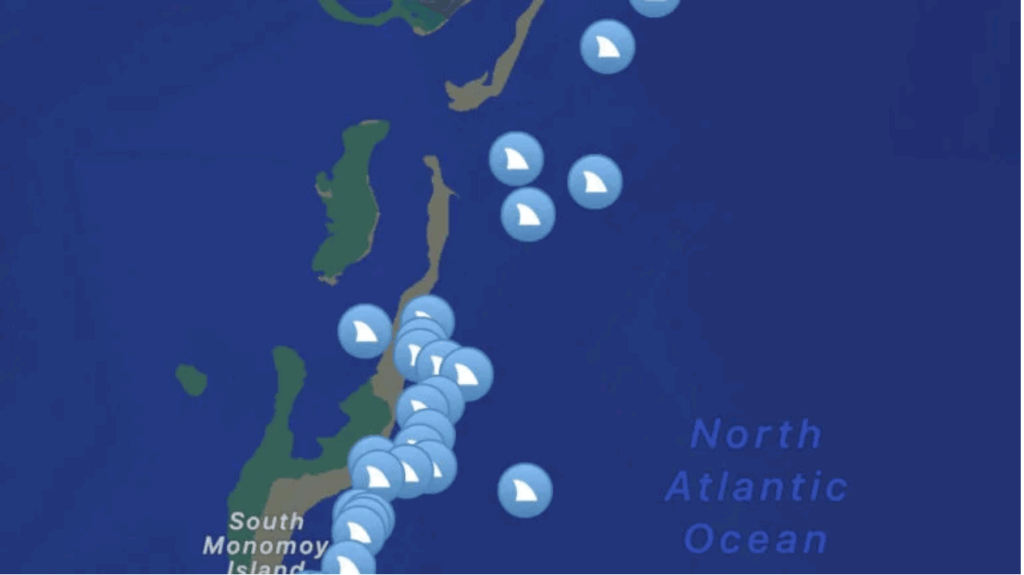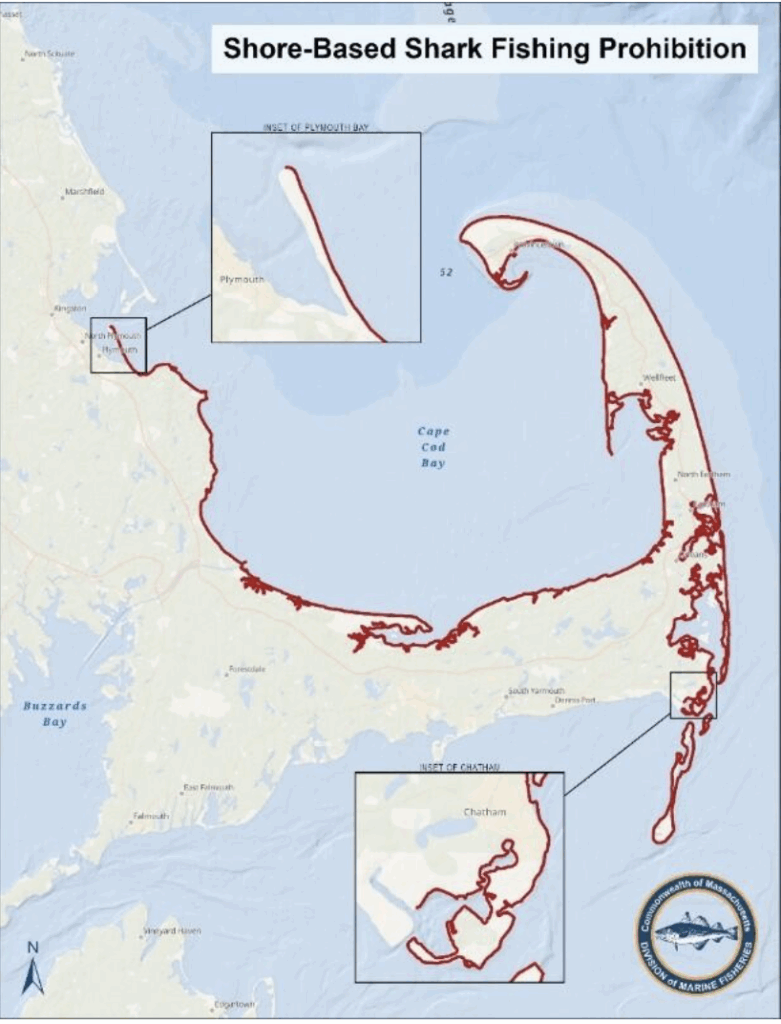
When the temperature begins to drop in New England, and everyone who came up for summer vacation has to go back home, the Great White Sharks that are infamous in the Cape Cod area also begin to migrate south. By the end of October, shark season is officially over, and Massachusetts Bay and Long Island Sound are visited by our Arctic and Canadian friends for the winter.
Autumn: The End of the Season

Shark season reaches its peak in October and September when the ocean water is at its warmest after warming up during the summer. Ryan Knotek, of the New England Aquarium, describes how “both white sharks and sand tiger sharks migrate south by mid-October, leaving only the porbeagle and spiny dogfish behind to brave the cold’. Sharks are cold blooded and so most are not able to maintain their body heat when the water dips below their tolerance, except for a few special kinds like the Porbeagle and the Greenland shark which have adapted to the frigid conditions of the north.
Shifting Migration Patterns
Climate change has not only changed how warm the ocean gets, but it has also altered the heating and cooling cycles, so the water is heating up earlier and staying warm longer. Researchers have noticed that this change has altered the sharks’ migration patterns as a result. The sharks not only chase the desired temperature, but also where their food supply– seals– is going. The number of sharks no longer spikes dramatically in July, and September and October are now considered the busiest months for shark activity. Sharks are also reaching farther north in the Gulf of Maine and Canada earlier in the year, which has caused historically more sightings in that area lately.

Shark Hotspots: Chatham
Shark tracking has shown South Monomoy Island has become a very popular White Shark hangout. Between August 15 and 17, Sharktivity app users reported eleven great white sightings in that area, with sharks between 50 and 100 yards from shore. The Atlantic White Shark Conservancy has been tracking one particular frequent-flier named Quadrilateral (11 ft, male) who has made several appearances in this area. Thankfully protected with no residents, Monomoy National Wildlife Refuge has been a favorite aggregation site for White Sharks since 2023.

New Laws and Protections
Because of the number of shark sightings and how far into shore they have traveled, new safety protocols and regulations have been introduced. Orleans Beach Safety Director Anthony Pike says that shark sightings still spur occasional closures, but there were fewer this year– four, compared to eleven the year before– suggesting bathers and sharks are learning to live together more safely. However, statistically, humans do more damage than sharks do, and so new fishing restrictions have been enacted to reduce human impact on shark populations. The Division of Marine Fisheries have banned chumming from dawn to dusk to keep sharks from being attracted too far into shore. It has also banned heavy tackle and deploying bait using drones. This minimizes stress on locals and beachgoers and also on coastal fishes by not tempting the sharks into well populated areas.
Cape Cod Future:
While most sharks have left the Cape by November, NOAA data indicates White Sharks are beginning to stay in New England waters sometimes well into the winter. As climate change continues to alter ocean temperatures and prey distribution, migration patterns will likely continue to shift. For now, Cape Cod’s beaches are quiet again as the leaves begin to fall, but the summer will bring the return of the White Sharks— guaranteed.
